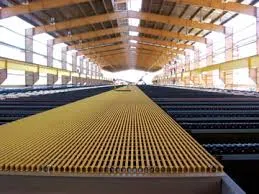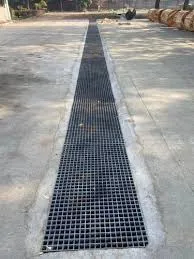
-
 Afrikaans
Afrikaans -
 Albanian
Albanian -
 Amharic
Amharic -
 Arabic
Arabic -
 Armenian
Armenian -
 Azerbaijani
Azerbaijani -
 Basque
Basque -
 Belarusian
Belarusian -
 Bengali
Bengali -
 Bosnian
Bosnian -
 Bulgarian
Bulgarian -
 Catalan
Catalan -
 Cebuano
Cebuano -
 China
China -
 China (Taiwan)
China (Taiwan) -
 Corsican
Corsican -
 Croatian
Croatian -
 Czech
Czech -
 Danish
Danish -
 Dutch
Dutch -
 English
English -
 Esperanto
Esperanto -
 Estonian
Estonian -
 Finnish
Finnish -
 French
French -
 Frisian
Frisian -
 Galician
Galician -
 Georgian
Georgian -
 German
German -
 Greek
Greek -
 Gujarati
Gujarati -
 Haitian Creole
Haitian Creole -
 hausa
hausa -
 hawaiian
hawaiian -
 Hebrew
Hebrew -
 Hindi
Hindi -
 Miao
Miao -
 Hungarian
Hungarian -
 Icelandic
Icelandic -
 igbo
igbo -
 Indonesian
Indonesian -
 irish
irish -
 Italian
Italian -
 Japanese
Japanese -
 Javanese
Javanese -
 Kannada
Kannada -
 kazakh
kazakh -
 Khmer
Khmer -
 Rwandese
Rwandese -
 Korean
Korean -
 Kurdish
Kurdish -
 Kyrgyz
Kyrgyz -
 Lao
Lao -
 Latin
Latin -
 Latvian
Latvian -
 Lithuanian
Lithuanian -
 Luxembourgish
Luxembourgish -
 Macedonian
Macedonian -
 Malgashi
Malgashi -
 Malay
Malay -
 Malayalam
Malayalam -
 Maltese
Maltese -
 Maori
Maori -
 Marathi
Marathi -
 Mongolian
Mongolian -
 Myanmar
Myanmar -
 Nepali
Nepali -
 Norwegian
Norwegian -
 Norwegian
Norwegian -
 Occitan
Occitan -
 Pashto
Pashto -
 Persian
Persian -
 Polish
Polish -
 Portuguese
Portuguese -
 Punjabi
Punjabi -
 Romanian
Romanian -
 Russian
Russian -
 Samoan
Samoan -
 Scottish Gaelic
Scottish Gaelic -
 Serbian
Serbian -
 Sesotho
Sesotho -
 Shona
Shona -
 Sindhi
Sindhi -
 Sinhala
Sinhala -
 Slovak
Slovak -
 Slovenian
Slovenian -
 Somali
Somali -
 Spanish
Spanish -
 Sundanese
Sundanese -
 Swahili
Swahili -
 Swedish
Swedish -
 Tagalog
Tagalog -
 Tajik
Tajik -
 Tamil
Tamil -
 Tatar
Tatar -
 Telugu
Telugu -
 Thai
Thai -
 Turkish
Turkish -
 Turkmen
Turkmen -
 Ukrainian
Ukrainian -
 Urdu
Urdu -
 Uighur
Uighur -
 Uzbek
Uzbek -
 Vietnamese
Vietnamese -
 Welsh
Welsh -
 Bantu
Bantu -
 Yiddish
Yiddish -
 Yoruba
Yoruba -
 Zulu
Zulu
Premium FRP Dual Lamination Products High Strength & Corrosion Resistant
- Fundamentals of corrosion-resistant composite solutions
- Material science breakthroughs and durability metrics
- Manufacturer performance comparison analysis
- Custom engineering specification framework
- Chemical processing industry implementation case
- Structural enhancement for water treatment facilities
- Strategic adoption roadmap for plant engineers

(frp dual lamination product)
Understanding FRP Dual Lamination Product Fundamentals
Dual lamination technology combines thermosetting resin matrices with fiberglass reinforcement to create exceptionally durable composite materials. This multilayer construction features a corrosion-resistant inner barrier that seamlessly bonds to a structural outer layer. Chemical processing plants increasingly specify these composites to replace traditional materials due to their unparalleled resistance to acidic and alkaline environments. The unique cross-layered architecture creates molecular barriers that prevent corrosive penetration while maintaining structural integrity under extreme thermal cycling and pressure fluctuations.
Engineering Advantages of Laminated Composite Systems
Modern dual lamination systems provide measurable performance enhancements over conventional materials. Accelerated aging tests demonstrate 78% less material degradation after 15 years of continuous chemical exposure compared to single-layer alternatives. The thermosetting resin matrix creates covalent bonds with glass fibers, yielding tensile strengths exceeding 55,000 psi while maintaining corrosion barrier effectiveness. Engineers leverage these materials specifically for chloride resistance exceeding 99.9% impermeability in seawater environments. Thermal stability ranges between -65°F to 280°F without laminate separation concerns, solving critical failure points in refinery expansion joints and chemical storage tanks.
| Manufacturer | Max Width (ft) | Thickness Tolerance | Chemical Resistance Rating | Lead Time (weeks) | VOC Compliance |
|---|---|---|---|---|---|
| CorroShield FRP Systems | 14.5 | ±0.5mm | Class A (ASTM C581) | 8-10 | Global EcoCert |
| DuraLam Composites | 16.0 | ±0.8mm | Class B (ASTM C581) | 6-8 | EPD Certified |
| ChemGuard FRP Solutions | 12.0 | ±0.3mm | Class AA (ASTM C581) | 12-14 | ISO 14001 |
Custom Specification Framework for Industrial Applications
Project-specific formulation involves precise resin-to-glass ratios tailored to chemical exposure profiles. For hydrochloric acid containment, engineers typically specify vinyl ester resin barriers with 100-120 mil thickness reinforced by E-CR glass. Dual lamination systems withstand 90% sulfuric acid solutions at 150°F when constructed with bisphenol epoxy inner liners complemented by isophthalic polyester structural layers. The customization process includes three critical phases: chemical exposure mapping, mechanical stress analysis, and installation feasibility assessment. Quality verification requires destructive testing of sample coupons per ASTM D2584 for glass content verification and ASTM C868 for peel strength validation exceeding 25 pli.
Chemical Processing Plant Retrofit Implementation
A major fertilizer producer documented 86% reduction in maintenance expenditures after implementing FRP dual lamination technology across their ammonium nitrate processing lines. The 18-month conversion project involved replacing carbon steel piping and vessels with custom-fabricated dual-laminate systems across three production units. Post-installation inspection data revealed:
- Zero corrosion-related failures after 4,200 operational hours
- 96.3% decrease in unscheduled production downtime
- Validated thickness retention within 0.6% variance after 18 months
Water Treatment Facility Structural Enhancement
Municipal water authorities increasingly adopt dual laminate technologies for chlorine dioxide containment systems where traditional materials succumb to stress corrosion cracking. The material’s non-conductive properties eliminated galvanic corrosion issues in mixed-material systems while withstanding 20 ppm chlorine concentrations at 140°F. Structural reinforcement calculations demonstrate 1.5x safety factors compared to ASME RTP-1 standards, allowing thinner wall constructions that reduce material costs by 22% without compromising integrity.
Strategic Implementation Roadmap for Corrosion Management
Facility engineers transitioning to FRP dual lamination product technology require comprehensive material validation protocols. Successful implementation hinges on rigorous resin selection processes, third-party fabrication audits, and strategic phased installation planning. The documented lifecycle cost analyses consistently demonstrate 35-40% cost advantages over a 20-year operational period compared to exotic metal alternatives. Ongoing research focuses on nano-enhanced resin formulations that promise 45% improvement in abrasion resistance for applications involving catalytic particles in petrochemical streams.

(frp dual lamination product)
FAQS on frp dual lamination product
Here are 5 FAQ groups in HTML format focusing on FRP dual lamination products, using the specified format and :Q: What is an FRP dual lamination product?
A: FRP dual lamination products consist of two bonded layers - a corrosion-resistant thermoplastic inner liner and a structural fiberglass-reinforced plastic (FRP) outer layer. This hybrid construction combines chemical resistance with mechanical strength. It's also referred to as GRP dual lamination or fiberglass dual lamination products.Q: What industries use fiberglass dual lamination products?
A: These products are essential in chemical processing, wastewater treatment and marine applications. They provide critical corrosion protection for tanks, pipelines and scrubbers in aggressive environments. The dual-layer design makes them superior to single-material solutions.Q: Why choose GRP dual lamination over single-layer FRP?
A: The thermoplastic inner layer provides impermeable corrosion protection while the outer FRP/GRP layer delivers structural integrity. This dual-system prevents permeation and extends service life significantly. It offers superior performance in chemical exposure compared to single-layer alternatives.Q: What thermoplastics are used in FRP dual lamination liners?
A: Common liners include PP, PVC, PVDF and polyethylene. Selection depends on chemical compatibility requirements in the application environment. These seamless thermoplastic barriers bond permanently to the structural FRP/fiberglass outer shell.Q: How does dual lamination improve fiberglass product performance?
A: The process isolates chemical resistance and structural functions into dedicated layers. This prevents stress corrosion cracking while maintaining full FRP/GRP strength properties. Resulting products demonstrate exceptional durability in extreme operating conditions.Latest news
-
Efficient FRP Demister Superior Fog Elimination GearNewsJun.05,2025
-
Optimize Data Transfer with RTRP Protocol for Max EfficiencyNewsJun.05,2025
-
Innovative Gold Mining Bits for Enhanced Drilling EfficiencyNewsJun.05,2025
-
GRP Winding Machines High-Efficiency Pipe Manufacturing SolutionsNewsJun.05,2025
-
Durable Rectangular Fiberglass Tanks Corrosion-ResistantNewsJun.04,2025
-
GRP Rectangular Water Tanks Durable Custom Dimensions for StorageNewsJun.04,2025









